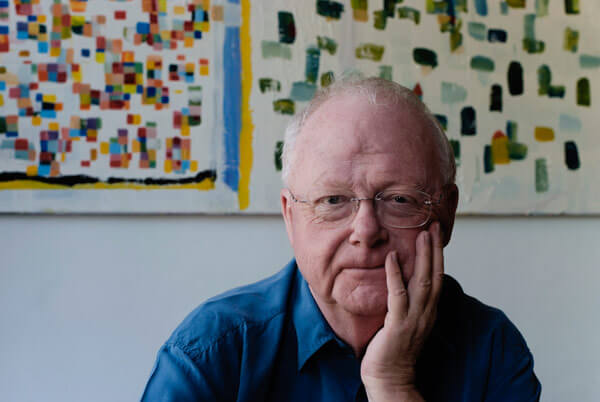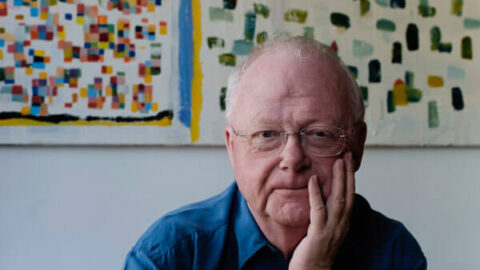 The weeklong Andriessen 75 festival moved down the road to Armstrong Concert Hall, Shenandoah Conservatory in Winchester, Virginia, on April 12, 2014, with three Andriessen pieces accompanied by music from Florent Schmitt, Derek Bermel, and Ruby Fulton. Most composers dread writing fanfares, flourishes, curtain-raisers, occasional works, homages, tributes, anniversary pieces… A few defy the odds, distilling something of their physiognomy, their way of being into the buttoned-down, throwaway miniature. And then there was the one and only Stravinsky: only in the unloved, unremembered Pour Picasso and Canon on a Russian Popular Tune can you find Igor Fyodorovich truly denuded, the composer as you were never meant to see him. Stravinsky at his most touching and vulnerable, sentimental diary entries from a man who otherwise abhorred autobiography.
The weeklong Andriessen 75 festival moved down the road to Armstrong Concert Hall, Shenandoah Conservatory in Winchester, Virginia, on April 12, 2014, with three Andriessen pieces accompanied by music from Florent Schmitt, Derek Bermel, and Ruby Fulton. Most composers dread writing fanfares, flourishes, curtain-raisers, occasional works, homages, tributes, anniversary pieces… A few defy the odds, distilling something of their physiognomy, their way of being into the buttoned-down, throwaway miniature. And then there was the one and only Stravinsky: only in the unloved, unremembered Pour Picasso and Canon on a Russian Popular Tune can you find Igor Fyodorovich truly denuded, the composer as you were never meant to see him. Stravinsky at his most touching and vulnerable, sentimental diary entries from a man who otherwise abhorred autobiography.

Bells for Haarlem performs the same magic key function for Andriessen. Penned for the 2002 rededication of the Concertgebouw in Haarlem (birthplace of the composer’s father, Hendrik), this six-minute trifle, a severe procession of tolling sounds organized according to strict numerological formulae, is arguably the most personal thing Andriessen has ever done. That this music straight from the Requiem Canticles wellspring cracks nary a smile nor a frown – it’s all effaced faces, Magritte–de Chirico-style – is of no consequence.
Andriessen told the audience the story of Holland’s church bells being spirited away during the Nazi occupation. It was the only way to stop Hitler’s troops from melting them into cannons. The composer was but a few months old once war began, and when the American liberation started, he had still yet to hear a real-life bell. All he knew would have come secondhand through Ravel’s La vallée des cloches. Until one day, aged five, his father (who had been detained by the Nazis), took him to hear the bells’ reinstallation. Curiously moved, he’d never experienced anything like it. That’s Haarlem: familiar yet strange, this “simulation” of real chimes – no tubular bells à la Les noces, Andriessen instead calls for a “horrible bells” synth patch – a recreation of that magical childhood experience for ears no longer enchanted by the sounds of sacred carillons.
La Girò, a product of Andriessen’s recent turn toward the concerto form (La Passione, Haags Hakkûh), couldn’t have been more different. This being Louis Andriessen, though, La Girò is no ordinary violin concerto, but a surreal monodrama for playing-chanting-acting fiddler. In its exploration of the psychology of performance, it actually harkens back to the “meta-music” of the early 1970s. You sense the distinct shadow of Berio’s nutso Recital I for Cathy. The narrative starting point is Vivaldi’s alleged relationship with the young singer Anna Girò, so the first (wordless) movement is a baroque sinfonia. In other words, a lyrical takeoff on the motor-rhythms of il Prete Rosso, whose music Andriessen “admires a lot.” But the real touchstone is the Bach-as-filtered-through-Stravinsky of the Concerto in D, adding Andriessen to the lineage articulated in his own mot d’esprit: “The thing that Bach recognized in Vivaldi is the same thing that Stravinsky recognized in Bach – himself.”

The third movement provides the coup, with the singing, speaking violinist recounting the world’s worst performance nightmare (“My entire family and my dearest friends were standing. I had to play, and every time I made a mistake, one of them was shot and killed”). But in the insistent final section, a long epilogue pervaded by dying seagull sounds, it becomes clear that the bad dream was very much a reality (“That shrieking, those are not birds!”). Somehow the whole salmagundi holds together. Not only that, in the hands of the dedicatee Monica Germino, it exerts a deliciously morbid fascination. Andriessen puts it best: “The piece would not have become the ‘performance’ it is without its dedicatee.”
Nicely complemented by sounds of “before” and “after” Andriessen – Florent Schmitt’s rarely heard Dionysiaques, replete with echoes of L’oiseau de feu and La Péri, and Ruby Fulton’s tragicomic Junk Pop, all kaleidoscopic textural disjunctions, were apt amuse-bouches – Haarlem and La Girò provided a night to remember.
Derek Bermel: Ides March (1990)
Ruby Fulton: Junk Pop (2011)
Florent Schmitt: Dionysiaques, Op. 62 (1913)
Louis Andriessen: Bells for Haarlem (2002), Hout (1991), La Girò (2011)Monica Germino (violin)
EDGE Ensemble
Shenandoah Wind Ensemble
Damon Talley (conductor)
























